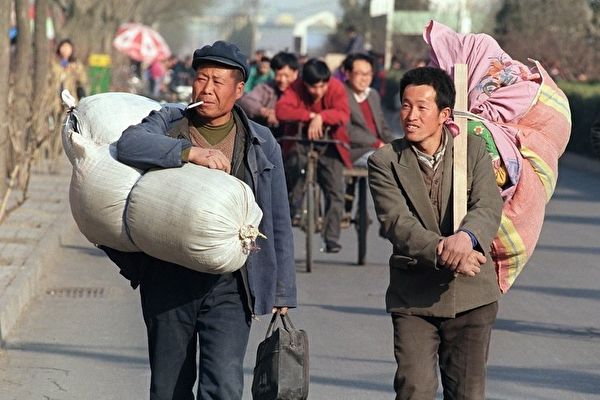Recently, during the 2024 “China Economic Quarterly Observation – Roundtable Discussion” hosted by Observer Network, Chi Fulin, Director of the China (Hainan) Institute for Reform and Development, proposed unlocking the consumption potential of migrant workers. He suggested that if 300 million migrant workers were to truly enjoy urban citizen treatment, there would be a consumption total of at least 12 trillion RMB. According to Chi Fulin’s calculations, this would mean each migrant worker could unlock 40,000 RMB in consumption potential.
In a similar vein, Sheng Laiyun, Deputy Director of the National Bureau of Statistics of the Communist Party of China, also mentioned the issue of migrant workers during a recent quarterly economic data press conference. He highlighted that the Chinese real estate market is supported by ongoing urbanization. Despite a residential urbanization rate of 66.2% in 2023, the rate based on registered residents is still below 50%, with 297 million migrant workers not fully urbanized. The challenge lies in these migrant workers not engaging significantly in property ownership in urban areas. Sheng emphasized a rational outlook on the real estate market adjustments.
Experts and government officials view migrant workers as a vital lifeline amid China’s current economic slowdown, with consumer stimulation and real estate revival relying heavily on them. With a massive population of 300 million migrant workers, experts express confidence in their potential to rejuvenate consumer and real estate markets. The presence of such a substantial migrant worker population is seen as a beacon of hope for the resurging markets.
According to experts like Liu Qiao, Dean of the Guanghua School of Management at Peking University, addressing the urbanization of migrant workers is seen as an easily executable measure. However, challenges such as ensuring equivalent access to services like education, healthcare, and elderly care for migrant workers in cities remain key hurdles.
The gap between urban and registered residents, as indicated by Sheng Laiyun for 2023, stands at 16.2%. This figure largely accounts for urban migrant workers, raising questions about their likelihood of property ownership in cities.
First and foremost, purchasing homes in cities is often not a necessity for farmers. Their considerations are manifold, including retirement planning, medical care, education, and marriage expenses. These financial burdens weigh heavily on migrant workers, making property ownership a distant aspiration.
Amidst the recent National People’s Congress and Chinese People’s Political Consultative Conference meetings, the government announced a mere 20 RMB increase in rural and urban residents’ pension, sparking criticism and mockery. Such incremental changes fail to address the fundamental challenges faced by the elderly in rural areas.
Furthermore, rural healthcare costs continue to escalate, burdening farmers with additional financial strain. During the pandemic, depleted health insurance funds led to a spike in rural healthcare expenses, making medical care less accessible for many.
Given these circumstances, it becomes evident that the issue is not about migrant workers withholding consumption due to wealth but rather struggling with financial constraints. With rural populations barely able to meet basic living expenses, disposable incomes are limited, making significant consumer spending aspirations unrealistic.
In conclusion, challenges such as deteriorating job environments and declining incomes further compound the predicament faced by migrant workers. Many of them are employed in sectors heavily impacted by the pandemic aftermath, witnessing closures, layoffs, and reduced economic activities.
Amidst the “prosperous era” rhetoric of “comprehensive poverty alleviation” touted by the Communist Party, the lackluster efforts to empower rural populations with marginal pension increases underscore a systemic neglect of their well-being. The reliance on migrant workers as the final bastion for economic revival and real estate revitalization exposes the exhaustion of conventional strategies to rescue troubled sectors.
Responsibility for editing has been omitted.

